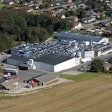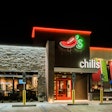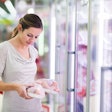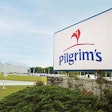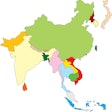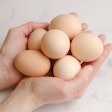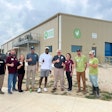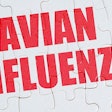There were several egg papers presented at the 2006 Institute of Food Technologists Meeting in Orlando, Florida June 24-27. Papers relating to pasteurization, microbial inhibition and functionality were of particular interest.
Geveke et al. at the USDA-ARS, Wyndmoor, Pennsylvania investigated combined ultraviolet light and thermal treatments for pasteurization of liquid egg white. They inoculated E. coli ATCC 23716 into liquid egg white. A low pressure mercury lamp was surrounded by a coil of UV transparent tubing. The UV treatment times were 50 and 60 seconds followed by heat pasteurization at 56°C. A combination of 50 seconds UV treatment and 56°C for 3 minutes gave a 6 log reduction of E. coli. UV processing alone at 50 and 60 seconds provided a log reduction of 1.9 and 2.5 logs respectively. Future studies should look at the affect of UV processing on Salmonella.
Jin and Zhang at the USDA-ARS Eastern Regional Research Center, Wyndmoor, Pennsylvania studied the effect of treatment temperature and pH of liquid whole eggs and liquid egg white on inactivation of Salmonella and Listeria by pulsed electric fields. Pulsed electric fields treatment at 15°C and 25°C did not affect the inactivation of S. typhimurium, S. enteritidis, and L. monocytogenes in liquid whole egg at pH 6.6. S. typhimurium in liquid whole egg at pH 7.2 was reduced 2.1 logs at 40°C and 1.8 logs at 30°C. S. typhimurium in liquid egg white at pH 8.2 exhibited 1.3 and 0.6 log reductions at 25°C and 15°C respectively. Earlier studies have indicated that egg white pH values of 8.8 to 9.0 are necessary to achieve a good kill of Salmolnella using heat pasteurization.
Egg whites are an excellent source of lysozyme and is separated commercially using ion exchange resins. It is used as a preservative in cheese. Park et al. , Oregon State University, investigated the inhibition of Listeria in cheese using chitosan-lysozyme composite packaging films. Mozzarella cheese was inoculated with 104 CFU/g of L. monocytogenes. They achieved greatest reduction in microbial population in the first day of storage when 0.63 to 1.26 log reductions were observed in cheese packaged in CL films containing 0 to 60% lysozyme respectively. They concluded that applying CL laminated films on cheese packaging may have practical commercial antimicrobial effectiveness. Previous studies have shown that lysozyme may be effective against Listeria.
Hunt and Park at Oregon State University and Handa (Henningsen Foods) studied the interaction of egg white and fish myofibrillar proteins. Egg white proteins are commonly added to surimi and surimi seafood products to improve textural properties. Three different egg white sources were used including liquid egg white, regular dried egg white, special dried egg white labeled P-39, and control with no egg white. Egg white was added at 0.5% and 2.0%. The special egg white showed improved interaction with fish proteins and significantly improved the gel texture and the color of the surimi as compared to the other egg white sources. Improved gelation properties of egg white are important in several food applications.
Another study by Liang and Kristinsson, University of Florida, emphasized the foaming properties of egg albumen subjected to unfolding and refolding treatment in the presence of Ca2+. Egg albumen in a 10mM Ca Cl2 and 100 mM Na Cl solution at 2.5% (W/V) was unfolded at either low or high pH and then refolded to pH 4.5-8.5. The yield stress was greatly increased and the liquid drainage reduced in the presence of Ca2+. Foaming properties of egg white are extremely important to the egg processing industry. (Dr. Glenn W. Froning, Professor Emeritus, Dept. of Food Science and Technology, Univ. of Nebraska-Lincoln, Lincoln, NE 68583-0919.)








